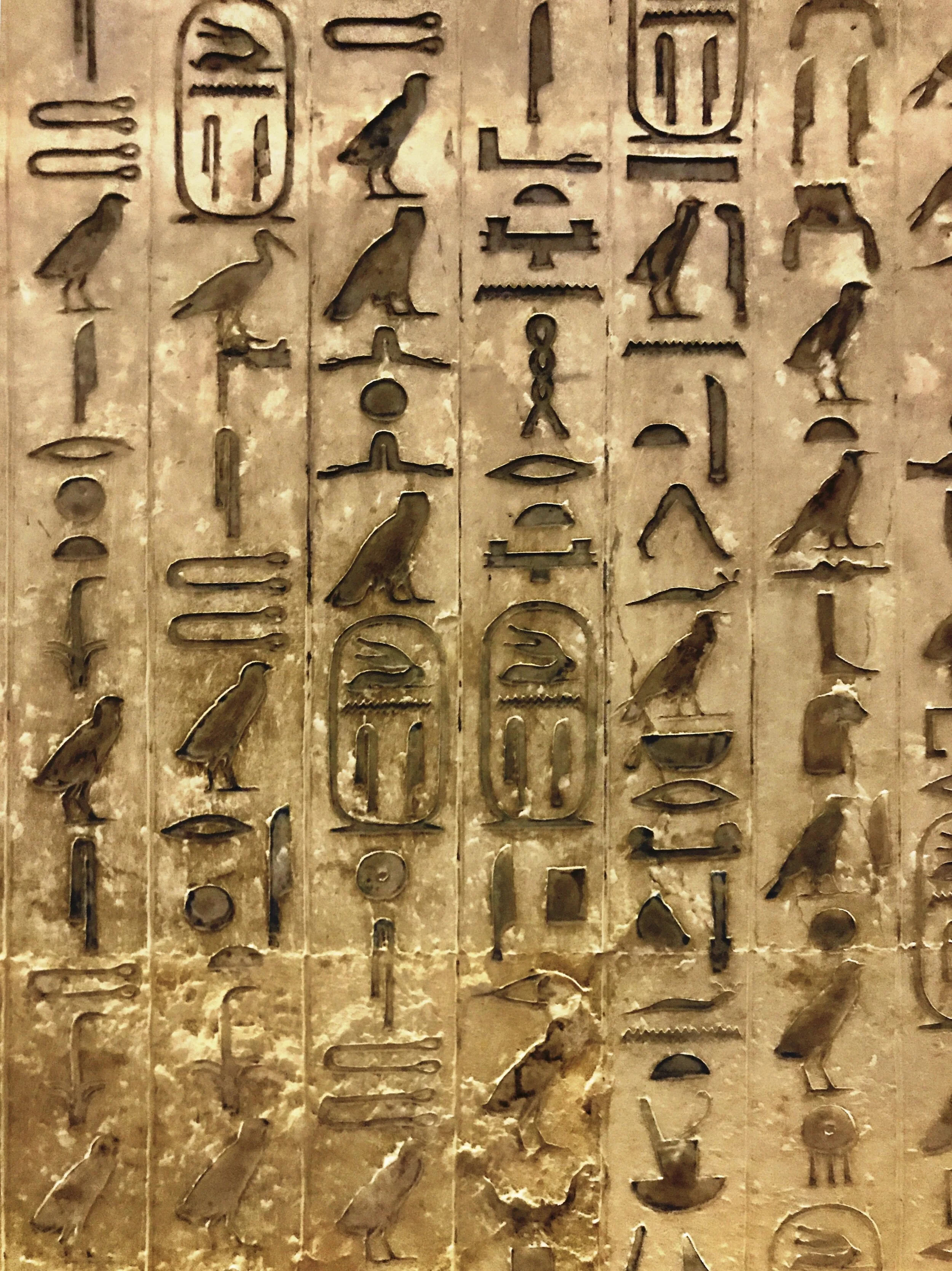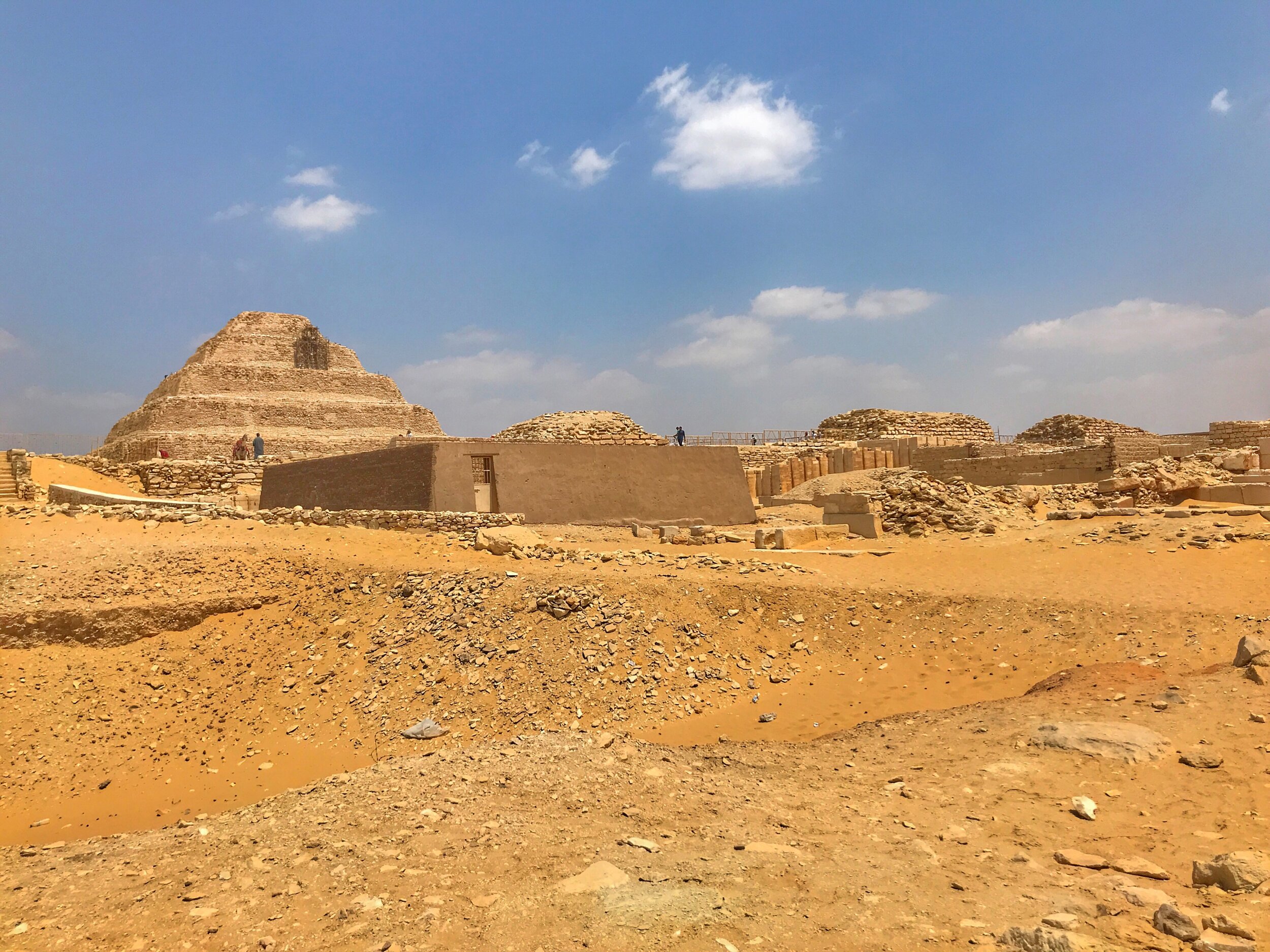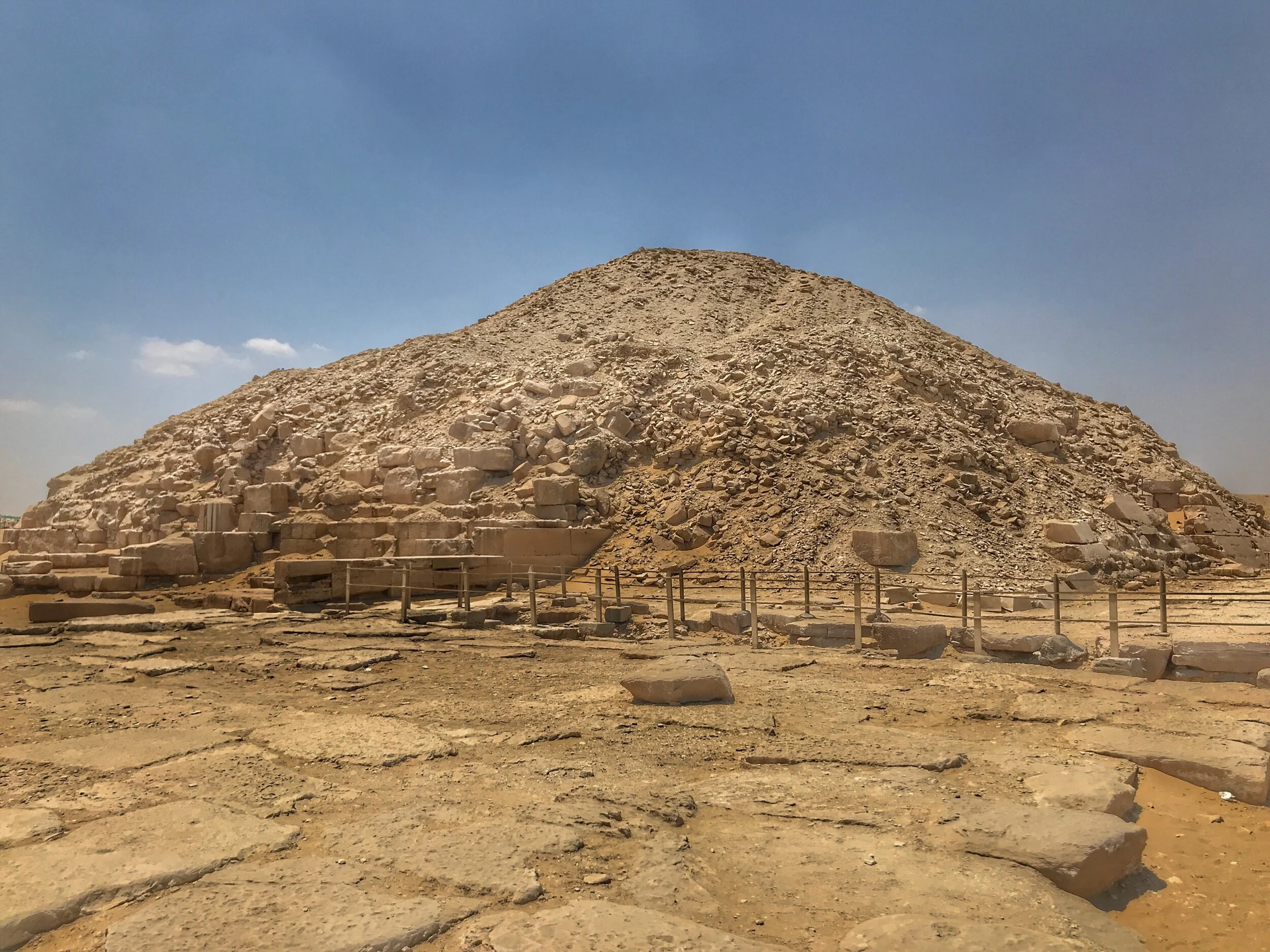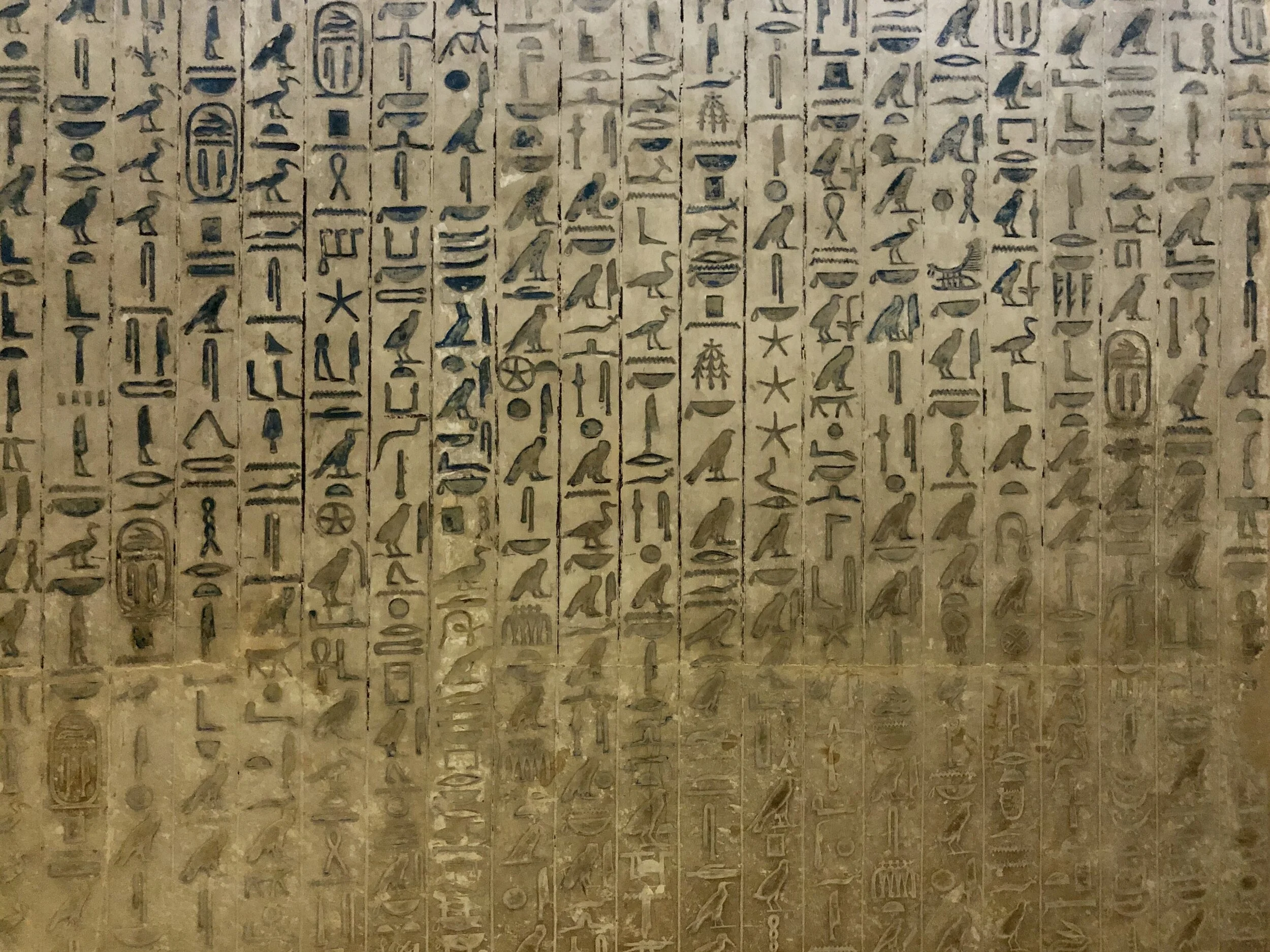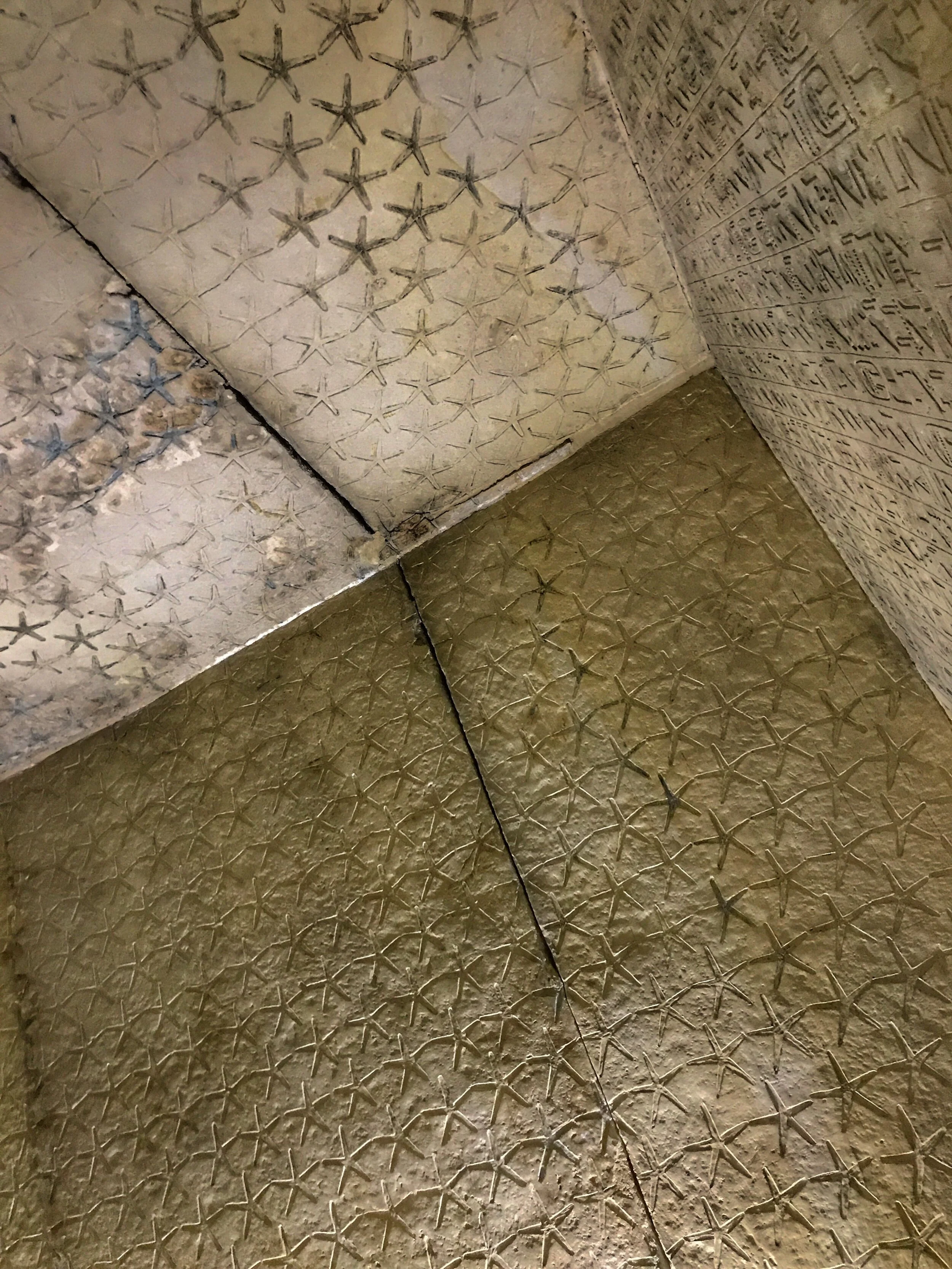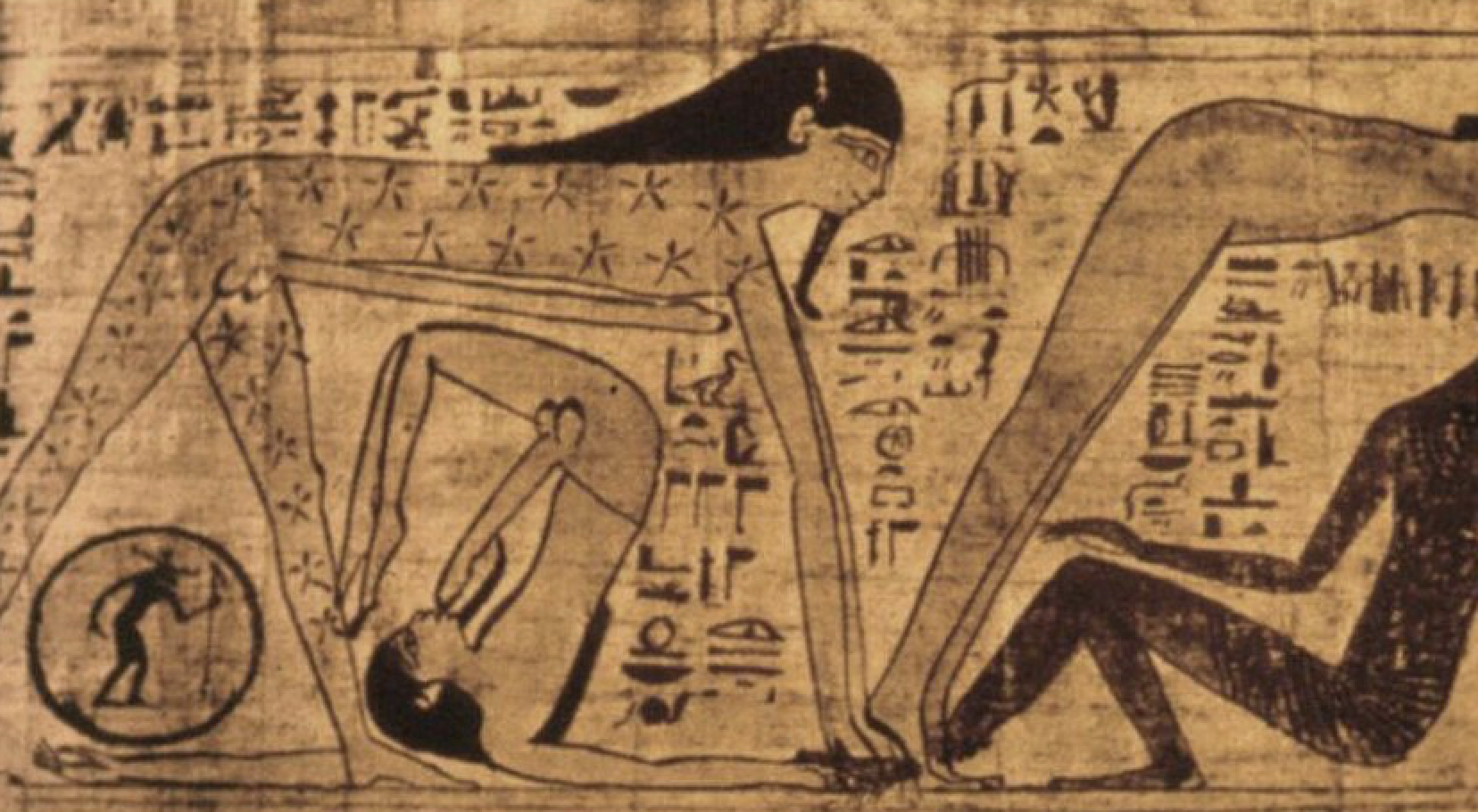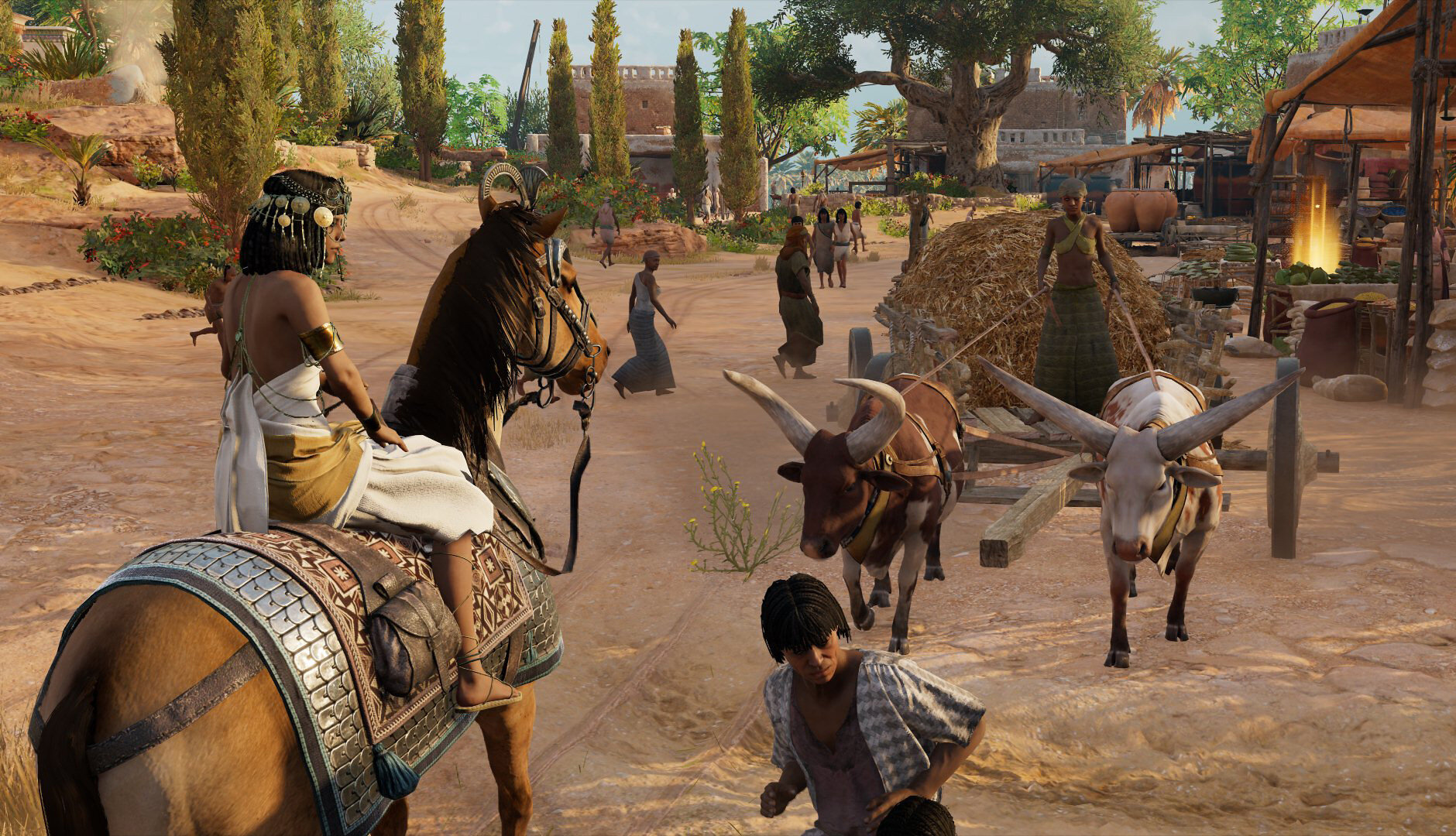Home of the bewitching Pyramid Texts, including the Cannibal Hymn — ancient magic spells cast to assure the pharaoh an eternal afterlife.
The Saqqara complex, about an hour south of Giza
South of the Step Pyramid of Djoser at Saqqara lies one of Egypt’s most important Old Kingdom monuments, the Pyramid of Unas, whose walls are covered in ancient spells.
What remains of the Pyramid of Unas, though, looks more like a crumbling mound of sand, stone blocks and debris than a royal pyramid. After walking past the Step Pyramid and being told that was unsafe to enter, Wally gestured to the collapsed structure before us, looking dubious, and asked our guide, “But it’s safe to go inside this one?”
“The texts carved into the walls include the Cannibal Hymn, which, strangely, describes the dead king consuming the gods themselves. ”
Built 80 years after the Step Pyramid of Djoser, the Pyramid of Unas is the smallest of the Old Kingdom pyramids. The complex was originally known as Nefer asut Unas, or Beautiful Are the Places of Unas, who was the ninth and final ruler of the Fifth Dynasty.
A small mountain of rubble and sand are all that’s left of the Pyramid of Unas — but you can explore the tomb carved beneath it
Unas, Dos, Tres
Pharaoh Unas reigned for 15 to 30 years, succeeding Djedkare Isesi, who might have been his father. Little is known of Unas’ activities during his reign, which was a time of economic decline (perhaps he spent too much money on his tomb?). He died without an heir, and his daughter married his successor, a commoner named Teti, whom historians consider the founder of the Sixth Dynasty. Unas’ wives, Nebet and Khenut, were buried in a double mudbrick tomb called a mastaba, adjacent to his pyramid.
It’s hard to imagine that it’s safe to explore the tunnels and chambers under this crumbling mound
The Pyramid of Unas itself is over 4,400 years old, part of the Saqqara complex, a necropolis used by pharaohs for millennia. It remained unexplored until the French Egyptologist Gaston Maspero uncovered it in 1881. Excavations later took place between 1899 and 1901, leading to the discovery of the tomb of King Hotepsekhemwy, the first king of Egypt’s Second Dynasty (back around 2890 BCE) as well as numerous shaft tombs from the 26th and 27th Dynasties.
Doesn’t it look like Gaston Maspero, the French Egyptologist who rediscovered the pyramid, made a call on his cell phone inside the tomb?
Keep in mind that without the step pyramids of Saqqara, even in their sad current state of demise, there wouldn’t be the Great Pyramids of Giza. This is where the ancient architects tried out their designs, moving from mastabas to step pyramids and finally to the towering Wonders of the Ancient World that still stand to this day.
Access to the Pyramid of Unas is included with the 150 Egyptian pound (less than $10) admission to the Saqqara necropolis. Our guide Ahmed recommended that we visit this tomb in lieu of going inside the Pyramid of Khafre at Giza as Khafre’s doesn’t have any relief carvings inside. Wally and I ignored his advice and went inside the Pyramid of Khafre as well, which was an absolute highlight not to be missed.
These ancient hieroglyphics are actually the oldest known collection of spells and were used to grant the pharaoh life after death
It’s What’s Inside That Matters: The Pyramid Texts and the Cannibal Hymn
The ground-level entrance to the Pyramid of Unas is surrounded by an open metal railing located on the north side. Wally and I clambered down the low, narrow passage using an angled wooden ramp similar to the one at the Pyramid of Khafre. Once inside the depths of the tomb, there’s a small vestibule where it’s possible to stand, that leads to the antechamber and a pair of adjoining rooms.
Carvings of famine in the causeway in the Unas complex
What makes this tomb unique is that it was the first to feature the mysterious Pyramid Texts, the earliest surviving collection of religious spells. The texts offer instructions and the power to grant life after death.
In the antechamber, the texts carved into the walls address the rebirth of Unas, his ascent into the sky and his mystical union with the sun god Ra (aka Re) as well as the fascinating Cannibal Hymn, which, strangely, describes the dead king consuming the gods themselves. Here are some of the more colorful excerpts:
A god who lives on his fathers,
who feeds on his mothers …Unas is the bull of heaven
Who rages in his heart,
Who lives on the being of every god,
Who eats their entrails
When they come, their bodies full of magic
From the Isle of Flame …Indeed, Khonsu [the Moon], who slaughters the lords, cuts their throats for Unas, and takes out for him what is in their bellies. He is the messenger whom he sends out to chastise.
Indeed, Shesmu [the wine-press god] cuts them up for Unas and cooks for him a meal out of them in his evening cook pots.
Unas is he who eats their magic, who swallows their spirits.
Their great ones are for his morning meal,
Their middle-sized ones for his evening meal,
Their little ones for his night meal,
Their old men and the old women are for his fuel.
Negotiating the afterlife was no small feat for an Ancient Egyptian pharaoh and required some 700 incantations. Of these texts, 283 are inscribed on the limestone walls of the subterranean antechamber, or horizon room, and burial chamber of the pyramid. A third chamber known as the judgement room is devoid of inscriptions, indicating that the pharaoh couldn’t be aided by sacred texts when answering for his mortal deeds before Osiris, the lord of the afterlife.
Pharaohs didn’t want to give up the good life, so they had elaborate incantations carved in their tombs to assure a pleasant afterlife
The Pyramid Texts predate the more famous Book of the Dead. These spellbooks do not mean that death was the Ancient Egyptians’ main preoccupation. In fact, it’s just that they enjoyed life so much they took every means possible to continue feasting, hunting, playing games and the like in an everlasting paradise as a god beyond death.
To the west is the burial chamber with its black basalt sarcophagus symbolizing the fertile earth. The proximity of the Pyramid Texts to the deceased acted as afterlife insurance for the pharaoh. Incised on the white alabaster-lined walls of the burial chamber, ritual texts for the rebirth of the king refer to the sun’s rays as a ladder Unas could use to ascend to the heavens.
The vaulted burial chamber ceiling is embellished with a pattern of stars (which looked more like starfish to Wally and me). When the burial chamber was excavated by Maspero, the sarcophagus was found to be empty, aside from an arm and skull fragments, still covered with skin and hair.
The ceiling of the burial chamber in the Pyramid of Unas is covered with stars
We were told to tip the men inside so they’d use their flashlights to reveal some of the carvings, which can only be seen with the lights off. As we entered the small room, another tour group was being shown the trick. Duke and I watched, squinting at the wall but not seeing anything. Eventually, we looked at each other, shrugged and moved on. –Duke
When you’re in Cairo, find a guide who’s not an ass like ours was — and spend an afternoon in the ancient necropolis of Saqqara
